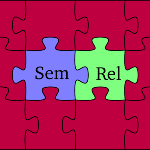Automatically Generated Norms of Abstractness, Arousal, Imageability and Valence for German Lemmas
- Type
-
ExperimentData
- Author
-
Maximilian Köper & Sabine Schulte im Walde
-
This resource contains a collection of 350 000 German lemmatised words, rated on four psycholinguistic attributes. All ratings were obtained via a supervised learning algorithm that automatically calculates a numerical rating for each word and each affective attribute.
We applied this algorithm to four different rating types: abstractness, arousal, imageability and valence.
Abstract words refer to things that we cannot perceive directly with our senses (idea, politics, ...), concrete words refer to things that we can perceive (image, scent, ...). A large subset of concrete words have a high imageability, i.e., these words refer to things that we can actually see. Valence determines the pleasantness of a word (gift vs. punishment). Arousal describes the intensity of emotion provoked by a stimulus (alert vs. calm).
The following table presents some examples for adjectives and adverbs. The dataset also contains verbs and nouns.
Adj+Adv Rating Abstractness-Concreteness aufgeblättert 8.44 beinlang 8.32 paradox 0.63 rechtfertigbar 0.36 Arousal bestialisch 9.33 gewalttätig 9.25 satzweise 0.81 ausgerollt 0.71 Imageability neonerleuchtet 9.83 schwarzverhüllt 9.61 gewiss 0.58 unstrittig 0.41 Valence wundervoll 9.69 wunderbar 9.69 katastrophenmässig 0.39 ausblutend 0.37 - Reference
-
Maximilian Köper, Sabine Schulte im Walde (2016)
Automatically Generated Norms of Abstractness, Arousal, Imageability and Valence for 350 000 German Lemmas
In: Proceedings of the 10th Conference on Language Resources and Evaluation (LREC). Portoroz, Slovenia.Please consider to additional cite the training resource publication (see our paper for exact references):
- Võ et al. (2009)
- Lahl et al. (2009)
- Kanske and Kotz (2010)
- Schmidtke et al. (2014)
- The MRC Psycholinguistic Database
- Brysbaert et al. (2014)
- Download
SemRel

Research Group SemRel
- Write e-mail
- Research Group Sabine Schulte im Walde

Sabine Schulte im Walde
Prof. Dr.Akademische Rätin (Associate Professor)


